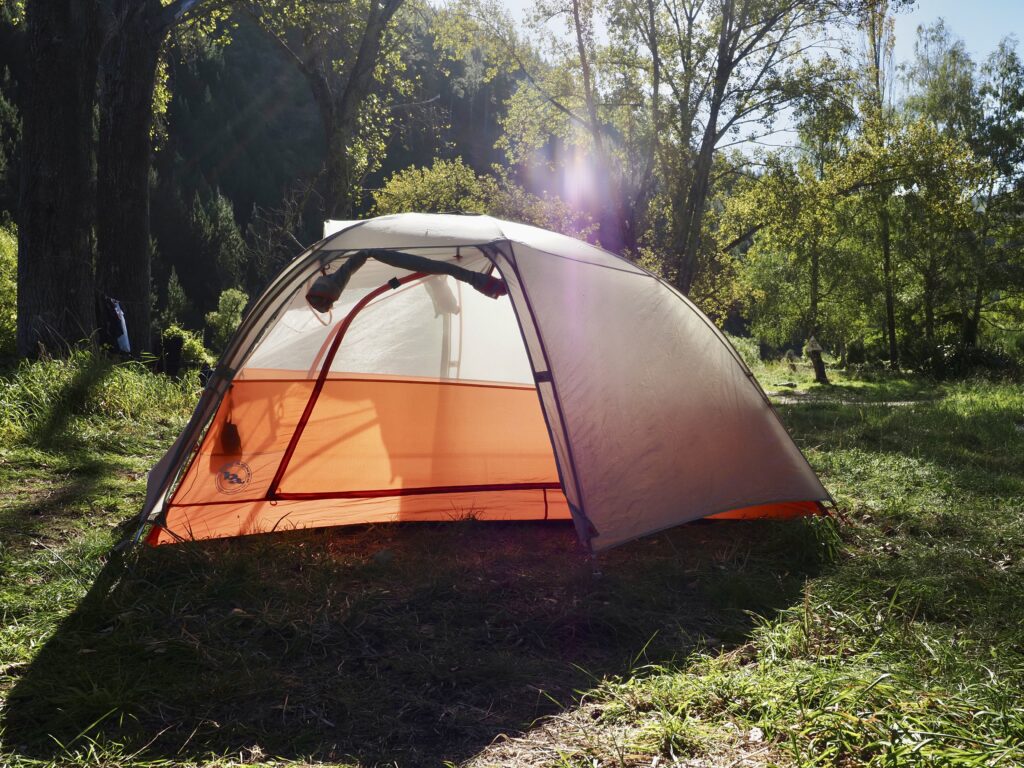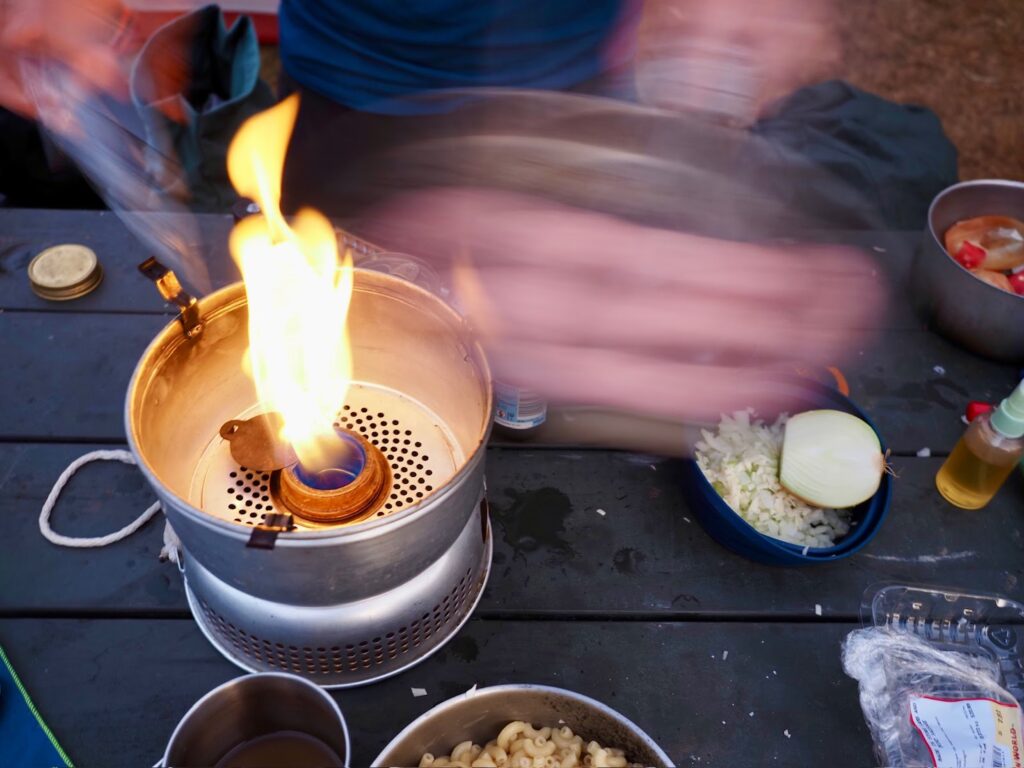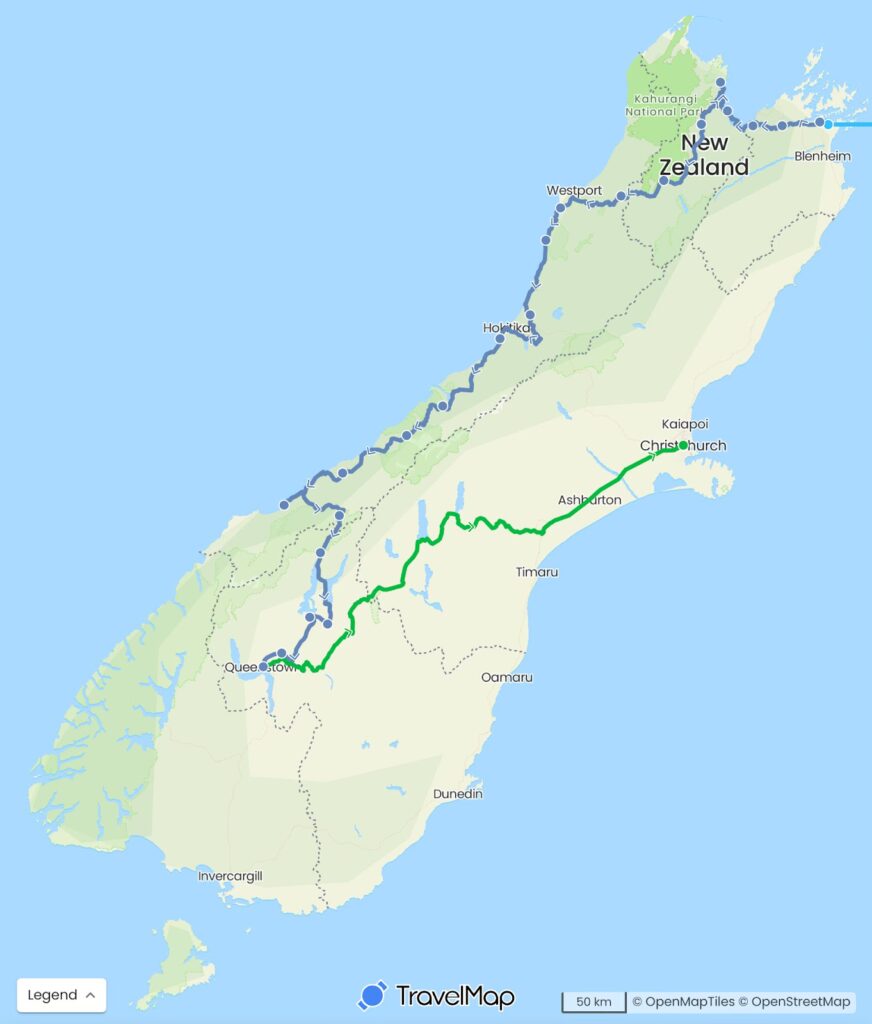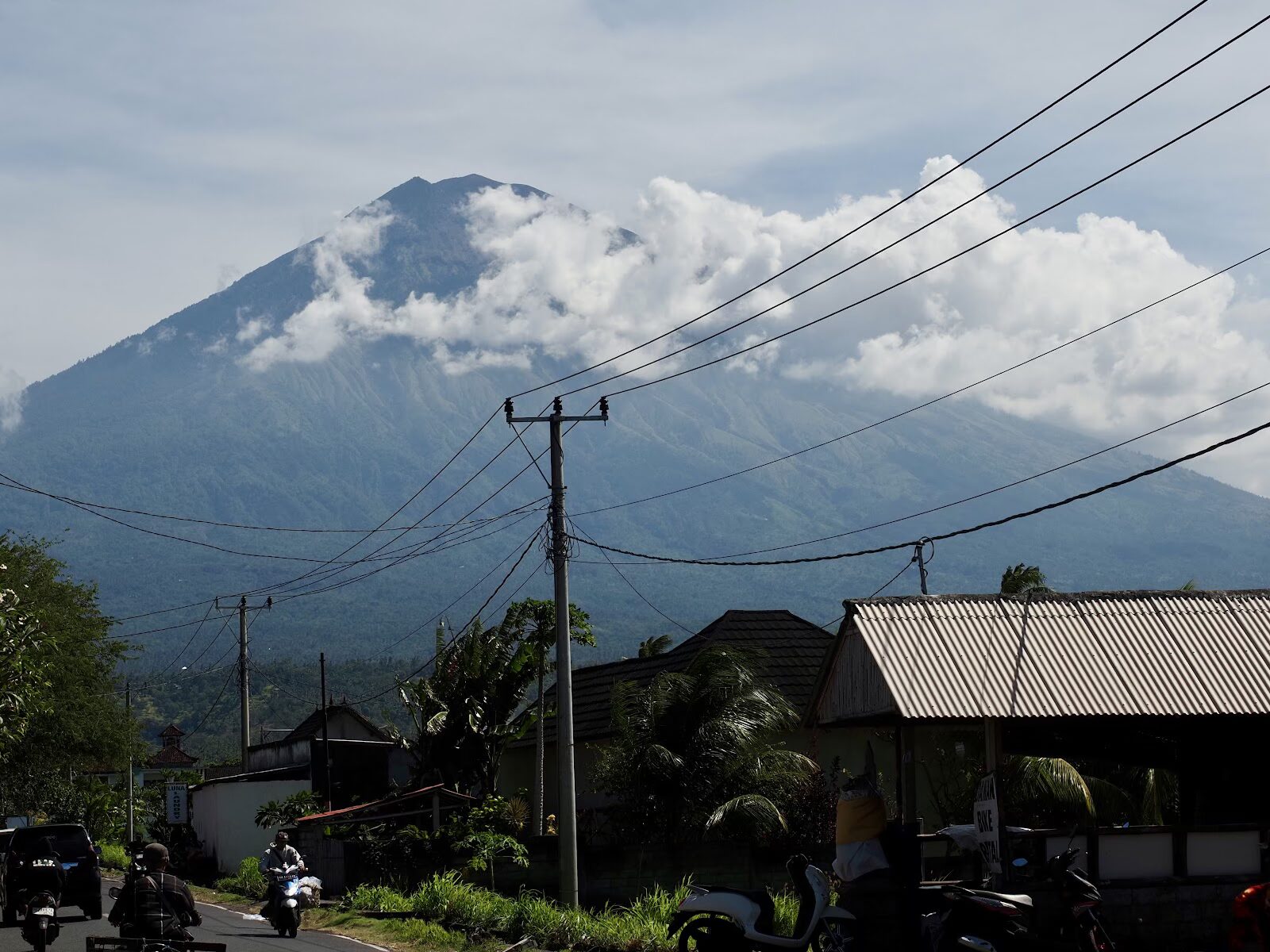Cycling New Zealand: Our Final Recap
Wed Apr 09 2025
|Conor and AlinaThousands of kilometers, endless climbs, and more cups of tea than we can count—our time bike touring through New Zealand has come to an end and it was nothing short of unforgettable. From the rugged West Coast to the winding tracks through native rainforest, we’ve cycled through some truly breathtaking landscapes, battled many hills, met heaps of friendly people, and learned a lot about life on the roads of New Zealand.
Now that we’ve wrapped up our time here and are reflecting on it while sipping tea Down Under, we wanted to share a final breakdown of our cycling journey—covering the numbers, our culinary discoveries, our route, and even what this adventure trip actually cost us so far.
Our Bike Touring Stats – By the Numbers
While we did engage in other activities during our visit to New Zealand, our main objective was to cycle. So here are the hard facts, numbers can’t lie after all:
🚴♂️ Total Distance Cycled: 2,196 km
⛰️ Elevation Gained: 21,000 meters
📆 Total Days of Cycling: 39
🛠️ Punctures/Mechanical Issues: 0
Accommodation & Sleeping Arrangements
New Zealand is a country built for cars and campervans—everything from campsites to road infrastructure seems designed with motorised travelers in mind. For two cyclists with a small tent, this often meant we didn’t quite fit into the equation.
Back in Europe, wild camping was usually straightforward. Finding a secluded spot off the road, setting up at dusk, and leaving no trace by dawn was second nature to us. However, in New Zealand, opportunities for wild camping were few and far between, and we didn’t want to push our luck.
Most of the land we encountered was either fenced-off private farmland or dense, rocky, and steep bushland—neither ideal for pitching a tent. As a result, we mostly relied on official campsites, which, to be fair, turned out to be a great option.

Our favorites were DOC (Department of Conservation) campsites, regularly scattered throughout the country, often in stunning national and regional parks. These sites were generally affordable (5-10€/person) and provided the basics—typically running water and a drop toilet—while offering a peaceful setting, often by a lake, river, or deep in nature.
If a DOC site wasn’t an option available, our next choice was a privately run campsite or a Holiday Park. These tended to be more expensive, had more facilities (like showers and kitchens), but also meant more noise, people, and less privacy—a trade-off we accepted when needed. In towns, we occasionally opted for a motel or even treated ourselves to an Airbnb—a rare luxury but always appreciated for a proper rest day.
Once we reached the South Island, we also started using Warm Showers, a hospitality network for cycle tourists (think CouchSurfing, but for cyclists). This turned out to be one of the highlights of our journey. We met incredibly generous hosts, shared delicious home-cooked meals, got valuable local tips, and—best of all—enjoyed a cozy bed after long days of riding. To any of our Warm Showers hosts reading this—thank you again!
Budget Breakdown
💰Average cost per month: 1.200€ (per person)
First, a couple of things worth mentioning:
- We spent about three weeks volunteering at Kiwiburn without spending any money.
- When we did spend money, we weren’t exactly counting our pennies.

As you can see from our breakdown, over half of our budget (55%) went to food & drink in one way or another. Which makes us conclude that groceries in New Zealand are ridiculously expensive, or that we eat and drink like bottomless pits (probably both).
Truth be told, we were not holding back from enjoying food, drinks and coffee on the road. A cost that we possibly could have kept lower, but did not necessarily want to.
NZ has a supermarket duopoly—Woolworths and New World—controlling nearly every major store. This lack of competition drives prices way up, particularly for fresh produce. We were surprised by the abundance of amazing local products (wine, coffee, avocados, olive oil, milk, meat—you name it), yet the shelf prices remained outrageously high.
That being said, traveling by bicycle offers the flexibility to either keep costs low or splurge just as much as anyone else. We’d say we leaned toward the mid-range when it came to our spendings. We were certainly grateful not to have to worry about petrol prices or higher costs for powered campsites, which made the experience a lot easier on the wallet.
💡Top Tip: If you’re cycling through the countryside, keep an eye out for local farm stands! Many locals sell their own fresh produce—eggs, veggies, honey, and even homemade goods—right from their driveways, often at much better prices than the supermarkets. Payment is usually on an honor system, so you just drop your money in a box. Not only is this a great way to save, but it also feels much better supporting local farmers than handing more cash to New Zealand’s supermarket giants.
Food & Drink
In a nutshell: Pies, ginger beer, great coffee, and even better wine.
Before coming to New Zealand, we didn’t know much about its culinary specialties… maybe for good reason. But hey, we’ll give them the benefit of the pie. You’ll find pies everywhere. Even the tiniest roadside convenience store in the middle of nowhere will likely have a heated display cabinet full of them. While living off pies for two months wouldn’t be entirely advisable (or sustainable), they were definitely the most reliable roadside emergency food we found.
Restaurant food? Decent, but not particularly memorable (as evidenced by our struggle to name any standout dishes). One could say the cuisine leans heavily toward British influence—think fish & chips, pies, and slow-cooked meats.
That said, there are some standout things worth trying:
- Lamb – No surprise, but it’s excellent.
- Coffee – Surprisingly good, consistently high quality.
- Brunch – Kiwis love brunch, and they do it well.
- Local wine – A must-try.
- Ginger beer – So good, we became mildly addicted.
- South Island specialty: Whitebait – Tiny fish, often cooked into patties.
- Manuka honey – You’ve probably heard of it. Yes, it’s worth it.
- Red kiwifruit – Sweeter than the usual green variety, and delicious.
- Asian cuisine – Surprisingly great, especially in cities—way better than what we usually find in Europe.
Buying alcohol, however, came with some challenges. Spirits aren’t sold in supermarkets—only beer and wine. And if you’re just looking for a casual “end-of-day beer,” good luck—many stores only sell them in 6- or 12-packs. If you want spirits (or single beers), you’ll need to find a Bottle Shop.
Bars were also surprisingly rare along our route, and the ones we did find often doubled as mini casinos, filled with slot machines and other gambling setups.

When it came to cooking, we did our best to prepare most of our meals on our trusty Trangia camp stove. Unfortunately, in the backcountry, supermarkets were usually understocked and (even more) overpriced. Still, we made it work—though we definitely found ourselves dreaming of a well-stocked grocery store now and then! As for fuel, we used methylated spirits, which, thankfully, were easy to find throughout our trip.
Route Planning & Navigation
When we started our trip all we knew was that we wanted to get from Auckland to Christchurch – somehow! We had not planned out our route and were making it up day by day, which worked out just fine for us. For navigation we primarily used a big paper map and Komoot (a route planning app). There are not many roads in NZ so navigation could not have been more simple. It is almost impossible to get lost there.
Truth be told, we ended up coinciding a lot with the TA (Tour Aotearoa) Route, especially on the South Island, so some more research into that could have probably been helpful for us, but we did not miss it.
In NZ we eventually learnt that a minor road does not always equal a quiet road and a major road doesn’t always equal a busy road. That being said, if you can avoid the state highways (with exception of State Highway 6) you definitely should, especially on the North Island.

What would we do differently in hindsight? On the North Island we probably would have tried to stick to more Great Ride routes / TA Routes, as we had some less pleasant experiences on the Highways. You can read back on our North Island cycling highlights here.
On the South Island we would repeat every single bit again (apart from the Maungatapu Saddle). The streets were overall quieter and the landscapes more majestic than anything we had seen up North. Here are more of our insights.

💡 Top Tip: We met a local tour guide before hitting the South Island, who gave us some wise advice for our route planning: “Go where the sun is”. The South Island is notorious for heavy, heavy rain and incredible downpours all year round. We were extremely lucky with our trip and the weather throughout, but we did witness the occasional turn of weather and it was a stark warning of what could have been.
⚠️ Cycling Safety in NZ
Road cycling in New Zealand can be challenging, especially outside the cities. Kiwis are generally not accustomed to seeing cyclists on the roads, and decent hard shoulders are often scarce. We noticed that many drivers didn’t seem to prioritize slowing down for cyclists or maintaining the recommended 1.5m distance when passing. Add to that the prevalence of large utility vehicles with trailers, and you’ll find yourself dodging some questionable overtaking maneuvers.
If you’re planning to cycle in New Zealand, be prepared for frequent encounters with heavy-duty vehicles passing at high speeds. However, with the right precautions and gear, as well as avoiding the more busy State Highways, cycling can still be a highly enjoyable experience. And there are also many off-road options, which are totally manageable with a fully loaded tour bike.
NZ road cycling must-haves:
- Rear view mirror
- High-Vis vest
- Lights

Final Thoughts
Would we do it again? Absolutely! In fact, we felt there was still so much more to see that we’d go back in a heartbeat—whether to complete more of the Great Rides by bicycles or explore the many hiking trails we missed this time around.
New Zealand is breathtaking in so many ways. Beyond its stunning landscapes, we were especially impressed by the efforts to protect native wildlife and preserve local ecosystems. It truly feels like an adventurous playground for outdoor lovers, with endless opportunities to explore.
We hope to come back someday!



